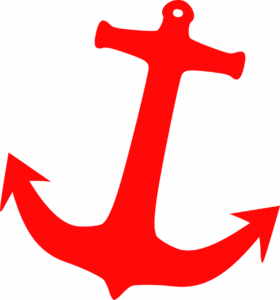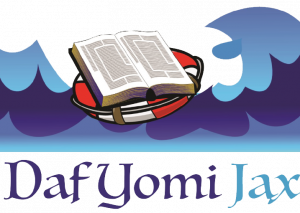Yoma 54-60 יומא נ“ד-ס‘

From the Desk of Rabbi Yaakov Fisch
Our Daf Yomi studies this week were primarily on topic with the Avoda on Yom Kippur with the Kohen Gadol. There was a precious nugget about the importance of Zion and the Land of Israel in our studies on Yoma 54. The Gemara states that the world was created from Zion. One interpretation is that the world was incomplete until there was a spiritual manifestation of the presence of G-d. That manifestation occurred first in Zion and then to spread to the world as a whole. That is the reason we direct our prayers towards Jerusalem. It is not just because the Beis Hamikdash stood there thousands of years ago. We direct our prayers to the direction of Zion as that is where the primary spiritual energy in the world is found.
Have a Peaceful Shabbos,
Rabbi Yaakov Fisch
Yoma 54
The Gemara quotes an unusual Braisa that quotes the Sages as saying that the world was created from Zion. It further mentions the Sages as saying that heaven and earth were created from Zion. What can this possibly mean? I would like to suggest an approach. The Torah says in Devarim 11:12 states אֶרֶץ אֲשֶׁר־ה אֱלֹהֶיךָ דֹּרֵשׁ אֹתָהּ תָּמִיד עֵינֵי ה אֱלֹהֶיךָ בָּהּ. This is translated as “The land which Hashem your G-d has His fixated upon it. Isn’t the presence of G-d found everywhere? The Torah teaches us the importance about the Land of Israel and Zion. While the presence of G-d is found everywhere, it is most profound and compelling in the Land of Israel. That is because the manifestation of G-d’s presence is more intense and electric than any other place
on earth. That is perhaps the meaning of our Gemara. The manifestation of G-d’s presence emanated from Zion and then spread to the whole world. Perhaps that is what the Gemara means when it says that the world was created from Zion. It is referring to the spiritual energy of the world that emanated from Zion.

Yoma 55
The Gemara talks about the contributions from the citizens towards the communal sacrifices and needs. There were 13 shofars into which the money (coins) were place and they were marked on the outside as to where the funds would be allocated to. These contributions were mandatory and all Jews in Israel needed to participate in this endeavor. Halacha has placed great importance on the need for all citizens to financially participate in communal responsibilities. The Shulchan Aruch in 163:1 of Choshen Mishpat rules that the community can mandate that all of its citizens participate in infrastructure projects as strengthening the city walls and gates. The community can also mandate that the residents participate in spiritual endavors such as purchasing Seforim to read and
study or build a local shul. These are the words of the Shulchan Aruch: א) כּוֹפִין בְּנֵי הָעִיר זֶה אֶת זֶה, לַעֲשׂוֹת חוֹמָה, דְּלָתַיִם וּבְרִיחַ לָעִיר; וְלִבְנוֹת לָהֶם בֵּית הַכְּנֶסֶת; וְלִקְנוֹת סֵפֶר תּוֹרָה נְבִיאִים וּכְתוּבִים, כְּדֵי שֶׁיִּקְרָא בָהֶם כָּל מִי שֶׁיִּרְצֶה מִן הַצִּבּוּר. The Shulchan Aruch further states that once someone has lived in the town for 12 months or has purchased a residence, he is obliged to participate in the communal responsibilities. וְכָל הַדָּר בָּעִיר י”ב חֹדֶשׁ, אוֹ שֶׁקָּנָה בָהּ בֵּית דִּירָה, נוֹתֵן עִם בְּנֵי הָעִיר בְּכָל הַדְּבָרִים הַצְּרִיכִים לְתִקּוּן הַחוֹמָה וּדְלָתוֹת וּשְׂכַר הַפָּרָשִׁים וְהַשּׁוֹמְרִים אֶת הַמְּדִינָה וְכַיּוֹצֵא בִּדְבָרִים אֵלּוּ שֶׁשּׁוֹמְרִים הָעִיר. {הַגָּה: וְדַוְקָא בִּסְתָם, אֲבָל אִם יָדַעְנוּ שֶׁרוֹצֶה לִקְבֹּעַ בָּעִיר, מִיָּד הָוֵי כְּאַנְשֵׁי הָעִיר. וְיֵשׁ אוֹמְרִים דְּאִם שָׂכַר בֵּית דִּירָה, כָּל שֶׁשָּׂכְרָהּ לְי”ב חֹדֶשׁ, הָוֵי כְּאַנְשֵׁי הָעִיר מִיָּד


Yoma 56
The Gemara relates a story with Chazzan that led the Mussaf davening in the presence of Rava. He contradicted himself the recitation of the Avoda on Yom Kippur regarding the dispute between Rabbi Yehuda and the Sages if the vessel use for the blood of the goat was also used for the blood of the bull. He clarified that the liturgy was consistent with the Sages, that there were two different vessels for the two respective blood types. In any case, we see from the Sages that the Kohen Gadol came out to place the vessel of the goat blood and take the vessel with the blood from the bull. The Yerushalmi states a more practical application based on this halacha. On days when two Torah Scrolls are taken out, the two Sifrei Torah should not be taken out together but rather, the first one should be put away before the second one is taken out. However, the Rema in 147 rules that the two Sifrei Torah can be taken out simultaneously. The Magen Avraham asks how that can be justified based on th
Gemara, which indicates the opposite!! The Magen Avraham responds that the case of the Kohen Gadol on Yom Kippur is different as the Kohen Gadol cannot carry the two vessels in his right hand simultaneously and therefore must carry each vessel one at a time. Therefore, there is no concern with the two Sifrei Torah as two separate people can carry the two Sifrei Torah.



Yoma 57
The Gemara discusses if the different vessels of blood got mixed up with one another and how to rectify the issue. The Gemara presets multiple variations and solutions for this challenge. The general approach is to redo the process as we are unsure which one was the correct application. The downside to this approach is that one may come to apply an additional round of blood. That would result in the violation of Ba’al Tosif which means one cannot add on to mitzvah. In this case, as we are not sure if this blood was actually already in the Mizbeiach, it seems we should err on the side of caution and not violate Baal Tosif! The Tosfos Yeshanim answers this question and says that one can only violate Ba’al Tosif if he is definitely adding to the mitzvah. In this case since it only a
safeik/doubt if he already applied the blood — there would not be the violation of Ba’al Tosif of ”maybe” doing it again. I was thinking of a parallel example to this example. On Shemini Atzeres in the Diaspora, the Shulchan Aruch says that one should sit in the Sukkah. The reason for that is that the eighth night of Sukkos, Shmini Atzeres may be the seventh night. (That is the basis of the two day Yom Tov observance in the Diaspora). One can ask, would that not be a concern of Ba’al Tosif for one to sit in a Sukkah an extra night and day? According to the approach of the Tosfos Yeshanim, it is not an issue as one only sits in the Sukkah on Shemini Atzeres because of a safeik and one cannot violate the Ba’al Tosif that way.
Yoma 58
The Gemara presents a challenge in the area of chatzitza. The general understanding of chatzitza is that any foreign object on a body would interfere with the water being able to penetrate every area of the body’s surface. However, in a certain case of chatzitza, it is called a מין מינו which means there is another item on the surface but it is not foreign but part of the body — would that be a
chatzitza? The Rema in the laws of Chatzitza in YD Ch. 198:22 writes that a wart or any sort of growth on the body would not be a chatzitza. These are the words of the Rema: {אֲבָל יַבֶּלֶת אוֹ יַתֶּרֶת וְאֵינָן מְדֻלְדָּלִין, אֵינָם חוֹצְצִים. That is because although it is undesirable, it is connected and part of the body and not considered a foreign entity.
Yoma 59
The Gemara discusses the status of an item or entity used for a mitzvah that has already been completed. The specific example is the leftover blood from the sacrifice that was used on the mizbeiach/altar. Once the zerika has been performed the Mitzvah has been completed. The Mishna taught as how to dispose of the leftover blood properly. A question asked is there still the consecrated status in the leftover blood that the laws of Meilah would apply? (Meilah is the violation of consecrated items used for personal use). According to Rabbi Meir and Rabbi Shimon, the Laws of Meilah would apply and the Sages disagree. There is a tangentially related issue with the oil used on Chanukah. The Shulchan Aruch raises the status of the leftover oil used on Chanukah but no longer has use as Chanukah is over. Is one allowed to use that for other purposes or does it have consecrated status? The Shulchan Aruch rules that since it was designated for the Mitzvah, one cannot use the oil for any other purpose. Rather, he rules that one must make a special fire with the leftover oil. These are the words of the Shulchan Aruch: הַנּוֹתָר בַּיּוֹם הַשְּׁמִינִי מִן הַשֶּׁמֶן הַצָּרִיךְ לְשִׁעוּר הַדְלָקָה, עוֹשֶׂה לוֹ מְדוּרָה וְשׂוֹרְפוֹ בִּפְנֵי עַצְמוֹ שֶׁהֲרֵי הֻקְצָה לְמִצְוָתוֹ. The Mishna Berura says that it is not permitted to leave this oil for next year as one may use this oil inadvertently for another purpose. These are the words of the Mishna Berura:להניחו לשנה הבאה לנ”ח אסור דחיישינן לתקלה ואפילו להניחו בכלי מאוס דודאי לא יבוא לאכלו ג”כ אסור דחיישינן שמא יבוא לדלוק ולהנות הימנו
Yoma 60
The Mishna emphasizes the importance of everything being done in the correct order. If something was done out of order, he must redo the process: Rabbi Yehuda and Rabbi Nechemia regarding the scope of the stipulation. Meaning is this stipulation of doing it correctly (and must be repeated if it was not done in the correct order). According to Rabbi Yehuda, this only applies to the Avoda that was done in the Holy of Holies(Kodesh Hakodashim). Rabbi Nechemia disagrees and says that it applies even to the Avoda done with the linen garments outside the Kodeh Hakedoshim. A more practical application of this rule is regarding the order of Tefila, which must be done in the proper order. On Rosh Chodesh ( today is Rosh Chodesh Tammuz 5781) we daven Mussaf in addition to davening Shacharis. If one arrived late to shul and the minyan is up to Mussaf- what should he daven first? Should he daven Shacharis as that is the correct order, or should he daven Mussaf as that is the value of davening with a minyan? A similar question was asked in Zevachim (91a) and not resolved. The Be’er Yitzchak says that he may daven whichever he chooses. This is based on the Rambam that rules that since the question was unresolved, he may choose Mussaf even though Shacharis is considered the Tadir. However, Rav Moshe Feinstein disagrees and says that one must daven Shacharis first even though it would not be with a Minyan. He argues that Shacharis comes first because of Tadir and because our Gemara earlier indicates a particular verse that teaches us this Halacha. It is known that Shacharis is modeled after the Morning Tamid and therefore should take precedence to Mussaf even in this situation
Weekly Quiz
-
1.In what way did the keruvim appear in the Kodesh Hakodshim?
-
2.If someone sends an animal from abroad to be brought as a korban and it is not known if the individual that sent it is still alive- can it still be brought?
-
3. Please explain the concept of Bereira.
-
4. Please provide an example of Bereira discussed in our Gemara.
-
5. Please cite two examples that show that we are sensitive to the fatigue of the Kohen Gadol on Yom Kippur.
-
6. Who was able to view the Paroches of the Beis Hamikdash in Rome and how did that happen?
-
7. Please cite an example of a chatzitza in the Avoda.
-
8. Can one personally benefit from the leftover blood of the sacrifices?
-
9. What did Terumas Hadeshen have in common with the garments of the kohanim?
-
10. What should a bald nazir do with the requirement to cut one’s hair at the conclusion of his nezirus?
